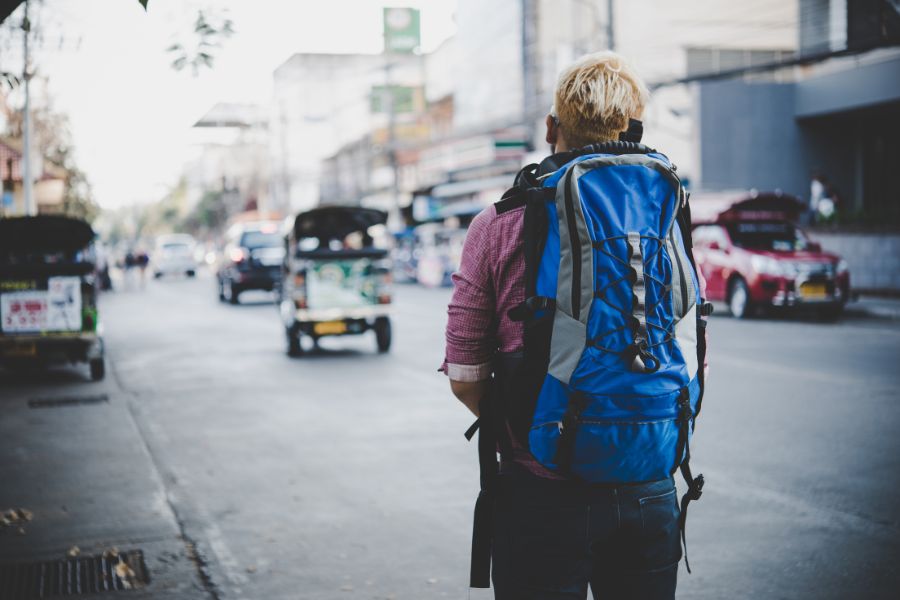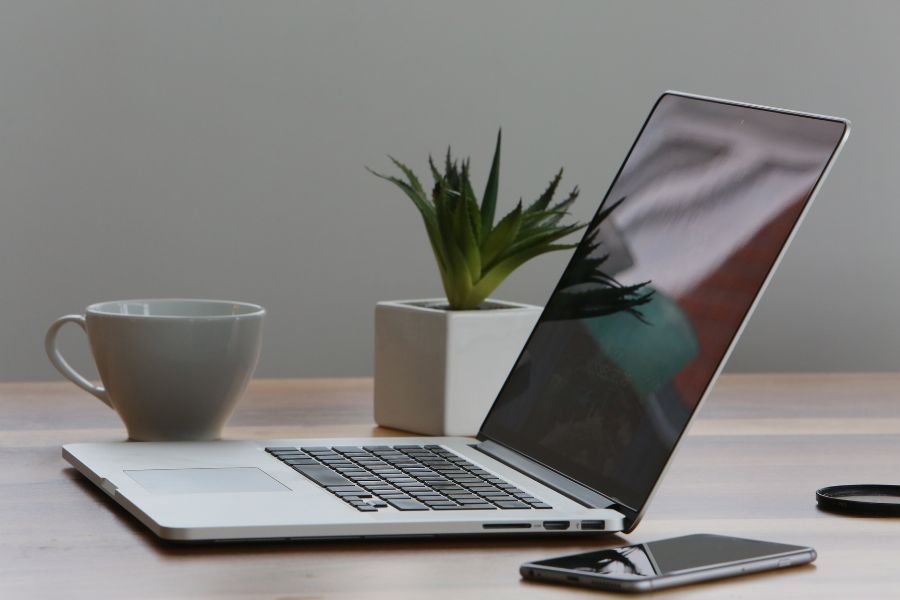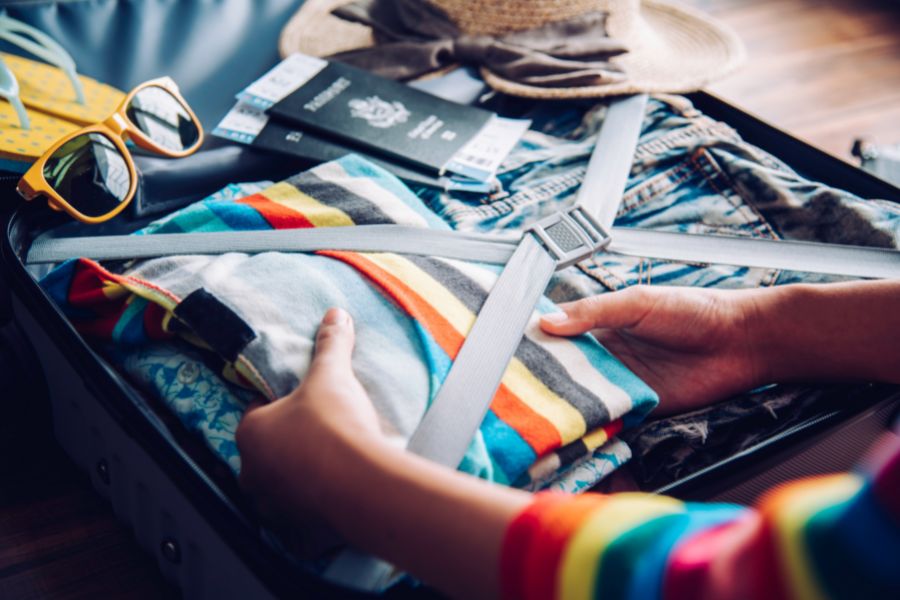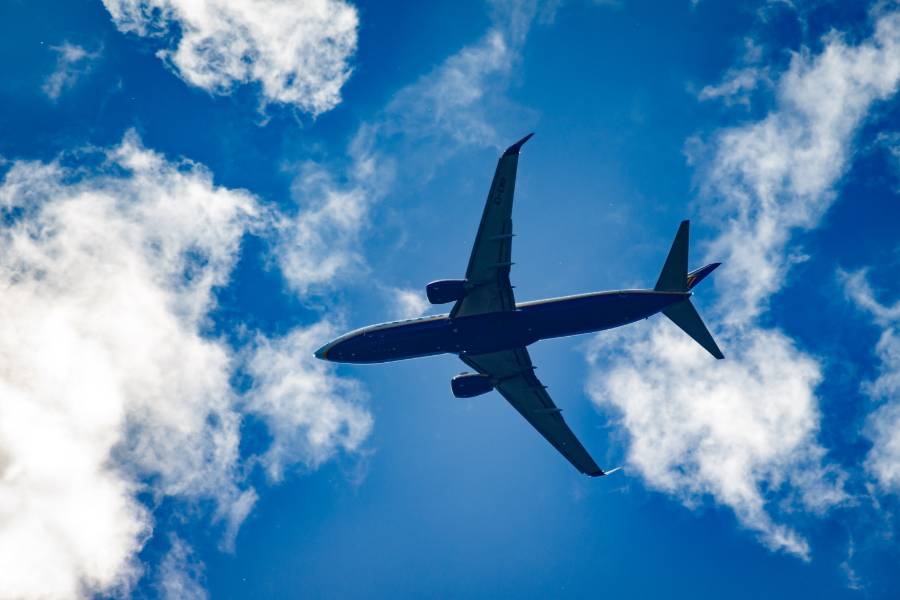It’s easier than you think to become a digital nomad. With more and more companies moving towards hybrid and fully remote work, being a nomad nowadays isn’t such a dirty word.
But, before you book a flight to the Caribbean to live the beach life, you need to think strategically about your equipment.
Digital nomads are nothing without their gear, tech, and gadgets. Without them, we’re just tourists. You need the right digital nomad gear, but you have to be smart about it.
The more you carry the:
heavier your bags.
more expensive your airline costs.
greater chance of damage, breakage, or accidents.
increased opportunity for theft or loss.
There are plenty of other guides on the web pitching ‘essential items’ such as GPS bag trackers, portable speakers, nose hair trimmers, and luggage scales.
I can confidently say, after 20 years and 50+ countries, you can survive without them.
Using this guide, you’ll be able to cut out all the fluff, leaving you with just the digital nomad essentials you’ll need to thrive.
Afterward, we’ll discuss some ‘quality of life’ extras, depending on your budget and packing space.

Table of Contents
Toggle
Backpack
Your essential packing list begins with what will soon become your new best friend (or worst enemy, if you don’t choose wisely).
Get this right and you’re on the path to happiness. Get it wrong and you’ll be miserable every time you need to pack up and move on.
To avoid extra costs at the airport, you’ll want a bag that fits the carry-on dimensions. While they vary from airline to airline, the rule of thumb is around 22 x 14 x 10 in (55 x 35 x 25 cm).
That may not seem like a lot of space but, with a sensible/ruthless packing strategy, it’s plenty.
For my digital nomad backpack, I prefer the Osprey Porter 46. Combined with packing cubes, everything fits together like a jigsaw with zero wasted space.
It doesn’t come with me if it doesn’t fit in the bag. Simple.
I also carry a simple, lightweight day pack for day-to-day living. The key with this bag is to be as inconspicuous as possible. When going to a co-working space or coffee shop to work, you don’t want to advertise your belongings. Keep it simple, ugly even.
Additional Considerations
If you’re heading off the beaten track, you’ll need extra safety precautions. If money’s no object, you can upgrade your backpack to the moon – waterproof, slash-proof, RFID-lined, wire mesh security webs, padlocks, etc.
The list is endless, yet most are luxuries you can live without. They’re nice, but they’re not essential digital nomad gear.
A waterproof backpack is great, but a waterproof liner/dry bag can be much cheaper and less conspicuous. Dry bags also have multiple other uses – laundry, beer cooler, travel pillow, etc.

Laptop
This is where the magic’s made, be it writing copy, editing videos, dropshipping, or a million other professions that make up the amazing digital nomad community.
The one thing that connects us all? Dependence on our computers.
Nomadic travel means long-term travel. That means you’ll be on the road, usually far from a repair shop or replacement parts. Apart from software upgrades, the machine you leave home with will be the one you’re stuck with for a long time.
Therefore, choosing the right laptop is a huge decision.
What do you need to consider?
Your budget
Battery life
Weight
Durability
System upgradability
Memory
Storage
There’s no one-size-fits-all answer. Your choice of laptop will depend on your profession, workflow, and software requirements. That being said, there are some constants.
Battery life is a factor if you’re planning to work from cafes or other casual locations without power sockets. If you’re working from the apartment or coworking space, it’s not such an issue.
The weight of your laptop is important, but it shouldn’t be a deal breaker. Yes, in a perfect world it’d be light as a feather, but that usually means a trade-off between lower specs or a much higher price. It’s common sense – 90% of the time it’ll be resting on a desk. If a few extra grams in weight means you can afford a machine with amazing specs, do it.
Durability is important for all your tech and gadgets, but especially so for your computer. If it breaks, your productivity grinds to a halt until you can fix or replace it. Invest in a sturdy laptop case. They’re usually pretty cheap, robust, and will save you a lot of tears.
While no machine is future-proof, it’s short sighted to buy a cheaper, older machine even if it has good specs. Will they support the operating system for the next 12-24 months? Are connectors universal? Are upgrades and accessories cheap and easy to find?
Memory (RAM) is a factor if you’re work involves graphic design, 4k video editing or you run memory-intensive programs. If that’s the case, 16 gigabytes should be a minimum. For everyone else, 8 gigabytes is plenty.
Never skimp on storage! After 6–12 months of working on multiple client projects and downloading software updates, you’ll be happy you opted for the extra capacity.
You can, and should, have an external hard drive for backups and additional storage, but you also need internal storage to keep everything ticking over nice and fast.
In conclusion, your laptop is your office. Your productivity and ability to make money depend on that one piece of equipment. Invest as much as possible, while using common sense to avoid unnecessary shiny objects.
My personal favorite is a 13-inch MacBook Air, but that can be a budget breaker. For Windows users, there’s the Asus Zenbook 13 or Surface Laptop 4 – both are lightweight with excellent battery capacity.
Quick note: If your laptop has an HDMI input, it’s worth bringing a cable. Most modern TVs have inputs so you can enjoy the benefits of a bigger screen if your apartment has one.
Blue Light Glasses
Speaking of shiny objects, one of the Digital Nomad essentials I’d recommend to all remote workers are Blue Light Glasses.
If your bag breaks you can buy a new one. Laptops can be repaired. Your eyes? You only get one set. Protect them.
According to a 2022 Global Digital Report, we spend an average of 7 hours per day in front of a screen. That’s normal human beings. For Digital Nomads, I’d estimate that to be much higher.
Aside from the daily grind, we’ve also got Social Media marketing, networking with future clients, endless emails, Zoom calls, etc. And then, at the end of the day to unwind and relax, you might watch a movie or read an ebook.
All that time your eyes are being subjected to blue light from your digital display.
Science is still divided on whether Blue Light Glasses are a miracle cure or placebo, but personal experience plus that of multiple friends/nomads/gamers can all attest to less eye strain, better sleep, and reduced headaches.
There’s no comparison to getting away from the computer, stretching your legs, and refocusing your eyes, but personal care while living the digital nomad lifestyle is a topic for another post.
Universal Travel Adapter
Our tech gear needs power, and you need to be prepared.
According to Worldstandards.eu, there are 15 types of plugs in the world. While some are interchangeable, you need a robust adapter to fit every occasion.
Aside from just the pins, you’ll also need one with a built-in surge protector. The last thing you want is your tech gadgets getting fried from a random electrical surge – and they’re not uncommon!
Additional extras that make life much easier include multiple USB ports (USB-A and C), fast charging, and a replaceable fuse. They’ll ensure that you can charge all your travel gear in one shot, meaning you can get on with more important things.
I prefer an all-in-one block (currently using the Epicka Universal Travel Adapter) over an adapter with multiple removable heads. Multiple heads mean multiple opportunities for loss or breakage.
What else should I carry in my digital nomad backpack?
Everything listed above I’d consider absolute essential items on your digital nomad packing list.
They are the absolute ‘can’t function without’ items. If you do your research, shop around, test them out and find the dream combo, you’re all set. You’re ready to start your digital nomad journey, knowing you can weather any storm.
Is that all you should pack? Absolutely not!
If you’ve got the space, this is where it gets interesting. I’m talking about the digital nomad gear you could live without, but which makes your quality of life that much better.

Noise-canceling Headphones
When you’re in the zone, in a state of flow, you don’t want to be disturbed!
If you’re working to tight deadlines you need to shut the rest of the world out, which is why I consider a set of headphones as essential gear for digital nomads.
When buying noise-canceling headphones, it’s important to look for the following features: battery life, sound quality, durability, and comfort.
Battery life should be at least 15 hours.
Sound quality should be exceptional, blocking out ALL background noise.
Durability because they’ll be getting daily use.
Comfort meaning lightweight and no sore pressure points on your head/ears after extended use.
The style of headphones you opt for is of course personal choice. I prefer a smaller, in-ear set, usually JBL as they’re found around the world. They’re less effective than the bigger, over-ear cans like the Sony WH-1000XM5 or Airpods Max, but less conspicuous and easier to transport.
Mobile Phone
Modern smartphones have made bulky cameras obsolete for most of the population. Unless photography is your gig, a good phone can serve all your needs.
iOS or Android is a personal choice but, as with laptops, there are some constants worth considering:
Dual-SIM
Fast charge
Durable case
Storage
Picking up a local SIM card/Chip is usually one of the first things I do when touching down in a new country. The additional cost of a month of data is insignificant when compared to the joy it brings not getting lost, having a real-time translator app, or 2FA (2 Factor Authentication) when out and about.
If you use 2FA for work, you’ll often need to provide a number to receive unlock/login codes. Constantly changing numbers can be a headache and hinder your ability to work.
My personal setup? A dual-SIM phone. I keep one local chip from my home country, paying a minimal monthly fee to keep it alive. Then I swap out the second chip whenever I move on.
All codes go to the regular number, and I have access to data and calls wherever I am. Double win.
Quick note: Make sure you unlock your phone before traveling. Unlocking it while away can be a hassle you don’t need.
A phone with the Fast Charge feature is a luxury, but very handy. There are times you’ll be low on juice but on the move. Fast charge in a cafe while you eat or waiting at a bus station and you’ll never feel the fear of being disconnected.
A durable case is fairly obvious but important. Even the most careful people in the world have accidents. Don’t let a little bump crush your connectivity.
Memory’s an ongoing battle. While most nomads are minimalists, we also like to download hundreds of apps – Productivity, Wellness, Transport, Guides, Editing, News etc. Anything that makes the digital nomad life easier, faster or more productive – there’s an app for it.
Cloud storage helps for backups, but you’ll still need physical storage in your smartphone. If you’ve got thousands of dollars to spend, go crazy. If not, get the most you can and then invest in a reliable SD card (reliability wins over size every time).
Additional Monitors
This is definitely a luxury for most, but worth considering depending on your profession.
If you’re a graphic designer, videographer or work with data, you’ll likely be used to working with multiple monitors. Used correctly, they can supercharge your workflow.
Are they practical for nomads? They can be.
Did you know you can use a tablet as a portable monitor? If you’re carrying one around to read ebooks or watch movies, you can connect it to your laptop to function as an additional screen.
If you’re using Apple products, Sidecar or Universal Control are options.
On Android, Spacedesk or superDisplay both work well.
If you’re carrying a tablet or iPad anyway, turning it into a portable monitor doesn’t require any other tech other than downloadable software and a cable. A wireless mouse could be handy, but that requires extra desk space to use which you don’t always have, e.g. on a plane.
Clothing
Clothes are fairly essential, right? Here’s my one piece of advice after multiple trips around the world, the longest trip lasting 3.5 years – don’t overthink it!
Don’t spend a fortune on the perfect wardrobe before you travel. What’s perfect for one place will be impractical for another.
Digital nomadism is about minimalism, experiencing different cultures and ‘enjoying the now’. Adopt that strategy with your wardrobe.
Pick up cheap, local clothes wherever you go, giving away what you don’t need whenever you move on.
Rule #1 when traveling is not to stick out. If you look like a rich tourist, you’re more likely to be targeted. Local clothes help you blend in, plus break down social barriers, allowing for more organic interactions. That last part may sound like a stretch, but trust me, it’s true.
Miscellaneous Items
There are lots of other little bits that could make your digital nomad experience run a little smoother, but most are location specific.
Power Bank
A power bank can be a lifesaver if you’re on a long journey. If you need to stay connected to continue working, invest in the biggest one you can.
Smaller power banks can be lighter and save space, but the battery capacity means you get a pitiful amount of charge. Go big or go home.
It’s important to note that lithium-ion batteries are not allowed in check-in bags, only in carry-on luggage. 160Wh (43,243mAh) is the maximum allowed size on flights, which is a huge battery.
Shop around to find the balance between power, size, and outputs. Anything around 26,000mAh, fast-charging capacity, and USB-A and USB-C outputs should be enough to keep your digital nomad equipment fully charged.
Portable Laptop Stand
I’m not a big user of them as I choose my apartments/remote working space specifically with a workstation in mind, but they can be important for your wellbeing.
You don’t want to get ‘Digital Nomad Neck’ – a hunched neck from staring down at a badly positioned screen day in, day out. Poor ergonomics can lead to a sore back, neck, and RSI. That then impacts your sleep, productivity, and quality of life.
Roost offer an incredible light, compact stand – 6 ounces (170 g) and 1.30 x 1.17 x 13 inches (3.3 x 3.0 x 33.0 cm). It’s not the cheapest, but if your health’s important to you then this could be considered essential digital nomad gear. Check out our post on the best laptop stands for digital nomads to see more options.
Reusable Water Bottle
A reusable water bottle is great for the environment, but not so vital when you’re working day to day in an apartment/co-working space with clean running water.
Cord Organizer
A multi-pocket plug and cord organizer may look impressive on the shop floor, but if you have a dozen cords that you’re struggling to keep organized, you’re doing something wrong.
If you want to use colorful cord wraps to keep everything neat and tidy, that’s good. They also help to identify specific items. But, in my opinion, it’s much easier to just devise a system of packing you’ll follow religiously.
My system – all cords and cables go in one small dry bag. No exception. When not traveling, I can use the dry bag for other things.
Portable Wi-Fi Hotspots
Some people rave about portable Wi-Fi hotspots. I’ve always found them to be vastly more expensive than purchasing a local SIM card.
If you’re serious about living the digital nomad lifestyle, you’ll be serious about where you’ll be living and working. If you’re venturing so far off the beaten track they don’t have reliable Wi-Fi, that’s bad for business.
If you want a portable Wi-Fi hotspot as an emergency backup, Skyroam Solis has plans from $6. In an emergency they can be useful, but not something to depend on for day-to-day use.
And finally, Travel Insurance!
While not a physical item to pack, it has to be included in this digital nomad packing list.
Once you know exactly what you’re bringing, then you’re free to book your travel insurance.
It’s only once you know which laptop, phone, backpack, and other tech gear you’ll be packing that you’re free to shop around for the best deal.
If you’re traveling super minimal with barely any electronics, you can ignore gadget coverage or additional coverage for valuables.
If you splashed out on the fancy new MacBook Pro, GoPro, water purifier, Kindle and top-of-the-range Blue Light glasses, you might want to upgrade your coverage.
Worldnomads.com is probably the most well-known. World Nomads offer good coverage with plenty of excellent reviews.
Insuremytrip.com is another big one, although some reviews claim to have had issues when entering the Schengen Zone.
AARDY.com is a marketplace where you can shop around for deals. Enter your travel plans and it’ll bring up the most relevant options.
No matter which travel insurance policy you choose, always read the small print. How do you claim? What are the criteria? What evidence do you need to provide? What are the limitations?
No policy is perfect, but they can be a lifesaver should things go wrong.
Digital Nomad Gear: Final Words
The essential gear for digital nomads isn’t a long list. It’s about getting the fundamentals right.
The best digital nomad backpack is the one that’s small enough to pass as carry-on luggage, but big enough to carry the essentials.
Your laptop should be powerful enough to allow you to work unhindered, but not so expensive that you’re terrified of taking it out of the protective wrapper.
Keep your wardrobe simple and refresh it along the journey.
Full-time travel can be a full-time job in itself. Don’t overcomplicate things by carrying useless items.
The digital nomad lifestyle is amazing. Embrace it with open arms.
Looking for more nomad content? Sign up for our newsletter!


